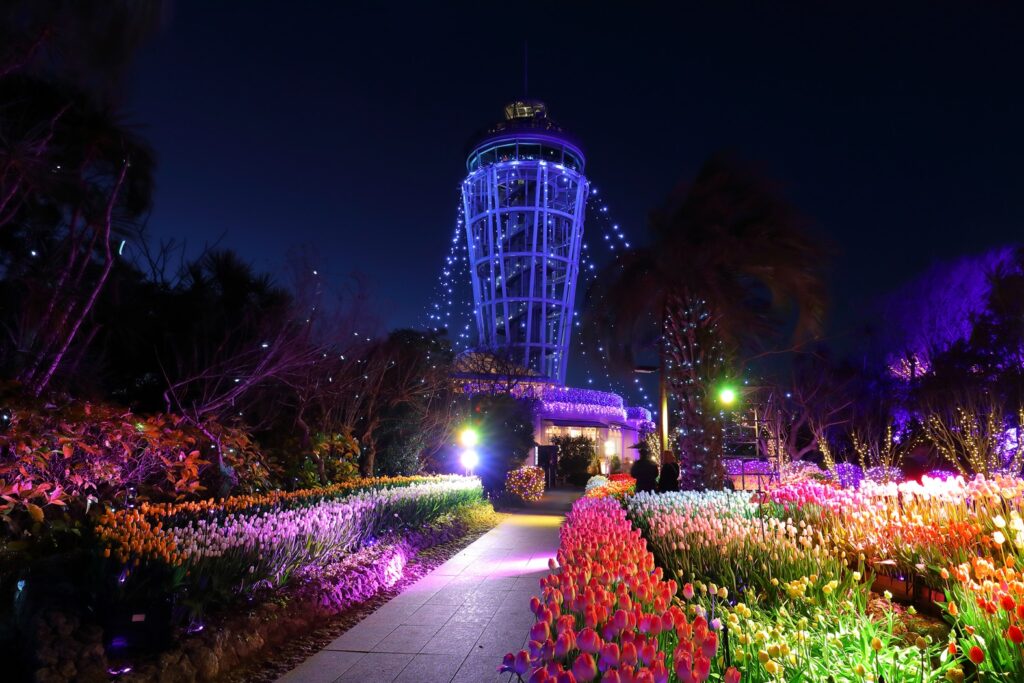Enjoy the Year-Round Festivals in the Historic Capital and Beautiful Coastal Towns/Annual Events in Enoshima and Kamakura

Kamakura, once the political center of Japan, and Enoshima, a historic site of faith and tourism, are both rich in unique attractions, stunning landscapes, and cultural treasures. The festivals rooted in local traditions and the vibrant, exciting events here are not to be missed. Explore and immerse yourself in the experiences that you can only find in these special places.
[January]
Praying for Construction Safety/"Chouno Hajime Ceremony" at Tsurugaoka Hachimangu Shrine
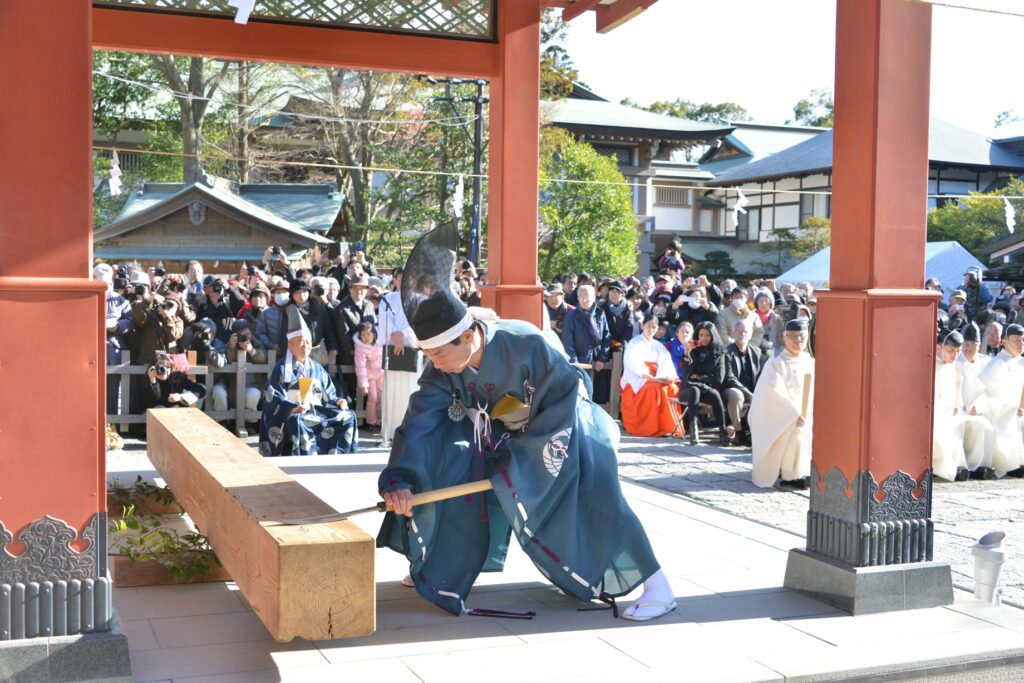

This ceremony is rooted in the ritual performed by Minamoto no Yoritomo, the first shogun of the Kamakura Shogunate. When Minamoto no Yoritomo established the shrine, he held this ceremony to pray for the safety of construction projects throughout the year. The event features traditional practices, including carpenters singing the ancient "Kiyari Song" as they carry timber, and the master carpenter making ceremonial cuts with an axe and marking wood with ink. The ceremony concludes with the “Chouna,” where the axe is struck into a sacred tree. Following the ritual, there is a performance of ladder acrobatics by the local "tobi" workers (steeplejacks).
[March]
Welcoming Spring in Shonan/Shonan Enoshima Spring Festival

This festival takes place across various locations such as Enoshima, Katase Higashihama Beach, Enoshima Shrine, and the Enoshima Samuel Cocking Garden. The event features traditional Japanese horseback archery, "Yabusame," where archers shoot arrows at targets while galloping on horseback, as well as the impressive "Warrior Parade" and the "Chigo Procession," where children march in colorful costumes. Other traditional ceremonies include "Shell Memorial Ritual" and the "Release of Young Shellfish," which express gratitude for the blessings of the sea. Additionally, there are entertaining events like the "Ninja Stage Show," which is especially popular with children. Enjoy the festival along with the beautiful ocean views and experience spring on Enoshima.
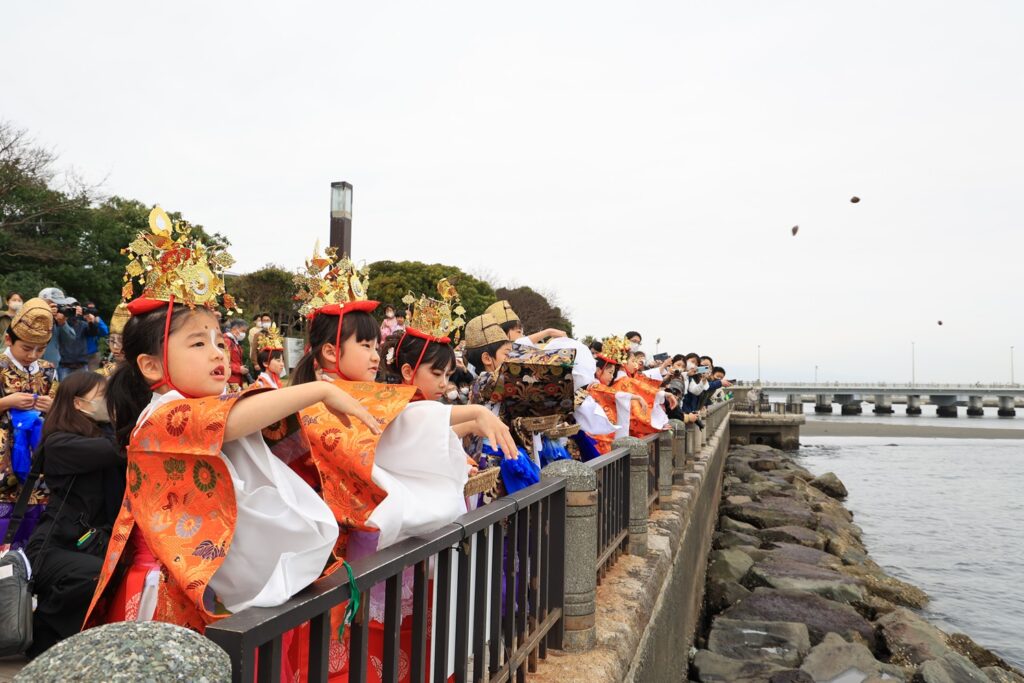
[April]
The Start of the Spring Tourism Season/Kamakura Festival

The Kamakura Festival is held annually from the second to the third Sunday of April, with Tsurugaoka Hachimangu Shrine at its center. The festival features various events such as the elegant "Shizuka no Mai" dance, traditional horseback archery known as "Yabusame," and outdoor tea ceremonies called "Nodate." This is a spring event rich in history and tradition, offering a truly unique Kamakura experience.


[April]
Festival of Flowers and Sweet Dew/Flower Festival (Hasedera Temple, Gokuraku Temple, Kencho Temple, Kosoku Temple, Hokai Temple, and others)

Every year on April 8th, temples across Kamakura host the flower festival known as "Kanbutsu-e" that celebrates the birth of Buddha. The symbol of the festival is the "Hana-mido," a small flower-decorated pavilion where a statue of Buddha is enshrined. Visitors pour sweet tea (made from the leaves of the hydrangea plant) or water over the statue as an offering. On this day, some temples open their usually hidden Buddha statues to the public, offer sweet tea to visitors, or host musical performances. Various events are held at different temples, and if the cherry blossoms are still in bloom, the vibrant scenery becomes even more spectacular.
*Please check the individual temple websites for more details.


[Mid-April to Late May]
Island and Art Collaboration/Enoshima International Art Festival (Various Locations on Enoshima and Katase Coast)
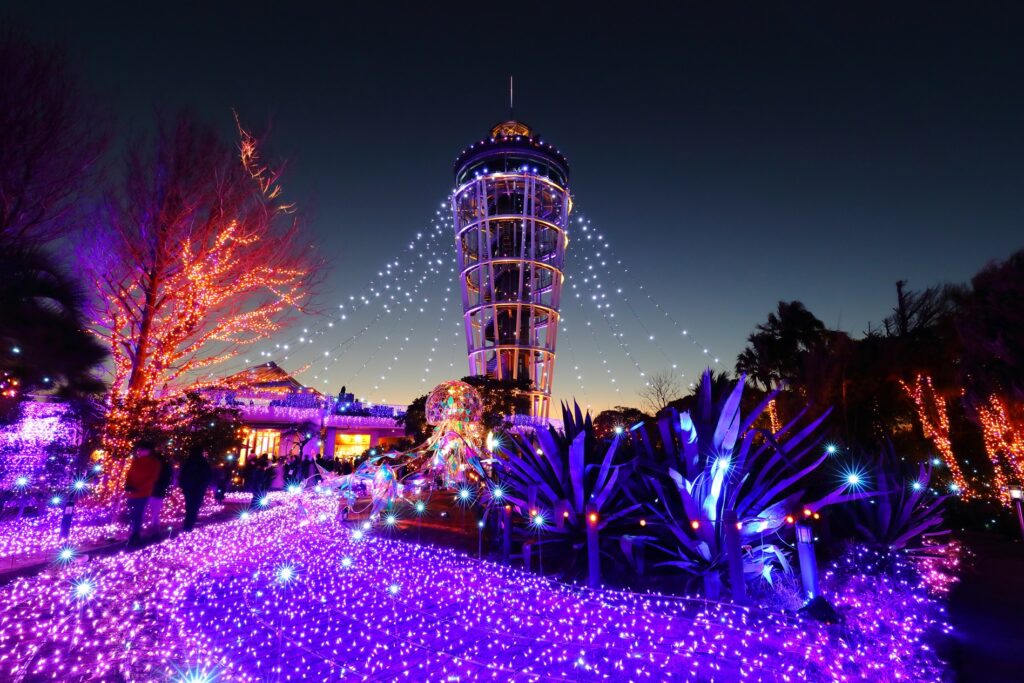
This art event is held under the theme “Draw in the sky of Shonan with your heart,” creating a unique experience on Enoshima. The festival features ukiyo-e prints of Enoshima, noren drapes, and flags that depict the changing sky throughout the day, enhancing the island's distinctive atmosphere. Visitors can enjoy special video displays on the "Enoshima Escar," an outdoor escalator that takes you to the 46-meter-high summit in just four minutes. During the festival, you can witness the natural phenomenon of the "Tombolo," where the sea recedes, creating a sandy path to Enoshima from the eastern side of Benten Bridge—a rare and memorable experience. Enjoy a blend of Enoshima's history, culture, nature, and art.


[May]
Praying for Children's Healthy Growth/Tsurugaoka Hachimangu "Shobu Festival"

May 5th is "Children's Day" in Japan, a traditional annual event dating back to the Heian period. Known as "Tango no Sekku" (the Boys' Festival on May 5th) or "Shobu no Sekku" (the Iris Festival), it is believed that the iris plant has the power to ward off evil spirits. Samurai warriors favored the iris motif on their armor, and over time, the Iris Festival became a significant occasion to wish for boys' healthy growth, eventually evolving into a national holiday for praying for all children's well-being.
[July]
A Majestic Sea Festival/"Yasaka Shrine Annual Festival Tenno Festival & Shinko Festival"

This festival is held simultaneously over five days, centered around July 14th every year, at Yasaka Shrine, a subsidiary shrine of Enoshima Shrine, and Koyurugi Shrine which is on the opposite shore. The event originates from a historical tale in which fishermen off the coast of Enoshima pulled up a divine statue that was enshrined at Yasaka Shrine. Later, it was discovered that the statue belonged to the deity of Koyurugi Shrine, which had been swept away by a tsunami. Since then, the "Shinko Festival," where the deity returns to Koshigoe once a year, has been celebrated. The sight of the mikoshi (portable shrine) carried by strong men through the streets and into the sea is truly spectacular. After a purification ceremony on a priest's boat, the mikoshi heads to Koshigoe, meets with the mikoshi of Koyurugi Shrine, and then returns to Enoshima. This is a unique and dynamic summer festival of Enoshima, combining the meaning of warding off summer epidemics with fishermen's traditions. A highlight in Koshigoe is watching the mikoshi as it comes close to the ENODEN train carriages.

[Mid-July to Late August]
Enchanting Traditional Lanterns/Enoshima Lantern Festival

For about a month and a half, lanterns light up various spots throughout Enoshima, creating an enchanting atmosphere rich in traditional Japanese charm. The Oiwayamichi Street, lined with cafes and specialty shops, the Enoshima Samuel Cocking Garden, and the areas around the various shrines of Enoshima Shrine are adorned with illustrated lanterns. Additionally, projection mapping is applied to the shrine buildings and torii gates, offering a mesmerizing experience of a different world. The dynamic and lyrical collaboration between the historical, traditional shrine architecture and digital visuals is a must-see.

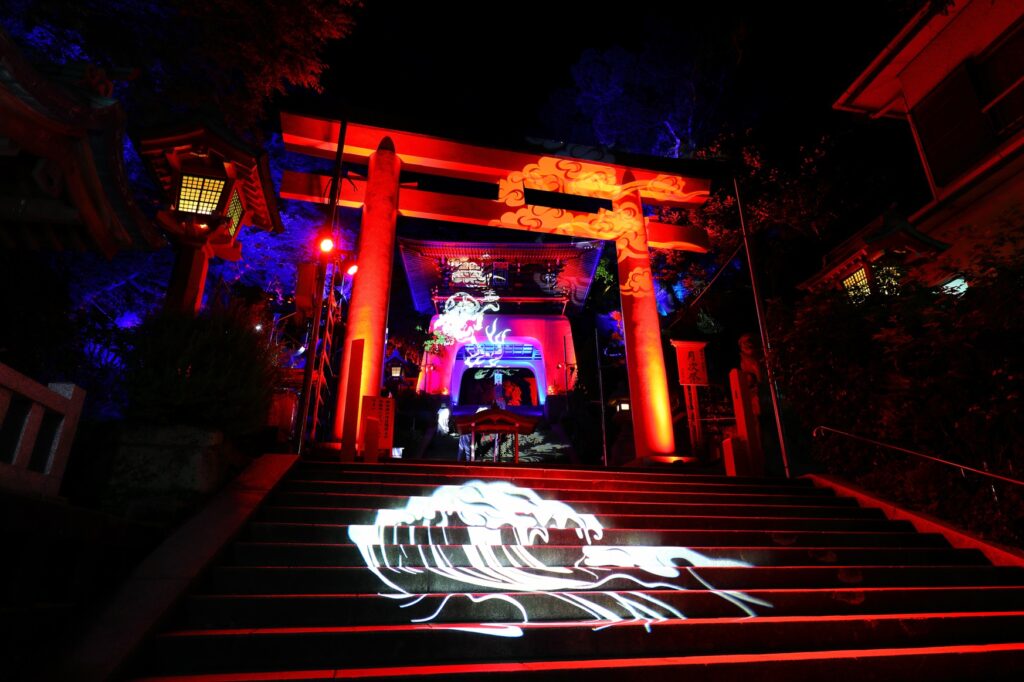
[October]
The Allure of Flickering Lights/Shonan Candle Festival
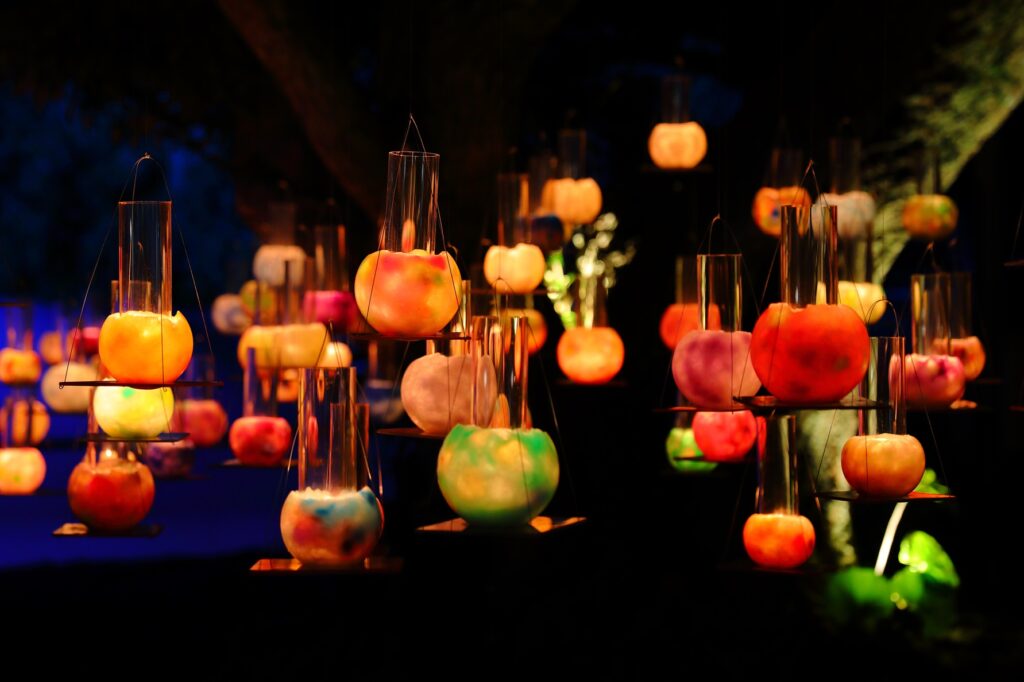
Japan's largest candle event, featuring 10,000 candles, illuminates the Enoshima Samuel Cocking Garden for 16 days. During this period, the garden at the top of Enoshima Island is bathed in the gentle and soft glow of candlelight. Together with the sparkling light of the Enoshima Sea Candle (lighthouse observation tower), visitors can immerse themselves in a dreamlike, otherworldly atmosphere. Each corner of the Enoshima Samuel Cocking Garden offers different candle decorations, making the experience even more enchanting. Guests can enjoy workshops, the café and shop inside the Enoshima Sea Candle (lighthouse observation tower), and takeout from food trucks while soaking in the candlelit ambiance.

[December]
Embrace the Gem Island in Radiance/Shonan Jewel

A winter event centered around the Enoshima Samuel Cocking Garden, spanning the Enoshima and Katase-Kaigan areas. The event features romantic and luxurious illuminations within the Enoshima Samuel Cocking Garden, vibrant lights decorating the approach paths and Oiwake Road, and unique nighttime views of Enoshima's illuminated scenery. Recognized with numerous titles such as Kanto's Top Three Illuminations and Japan Nightscape Heritage, it attracts many visitors every year, including locals and those traveling from afar. Experience a dreamlike moment in a space filled with dazzling lights.
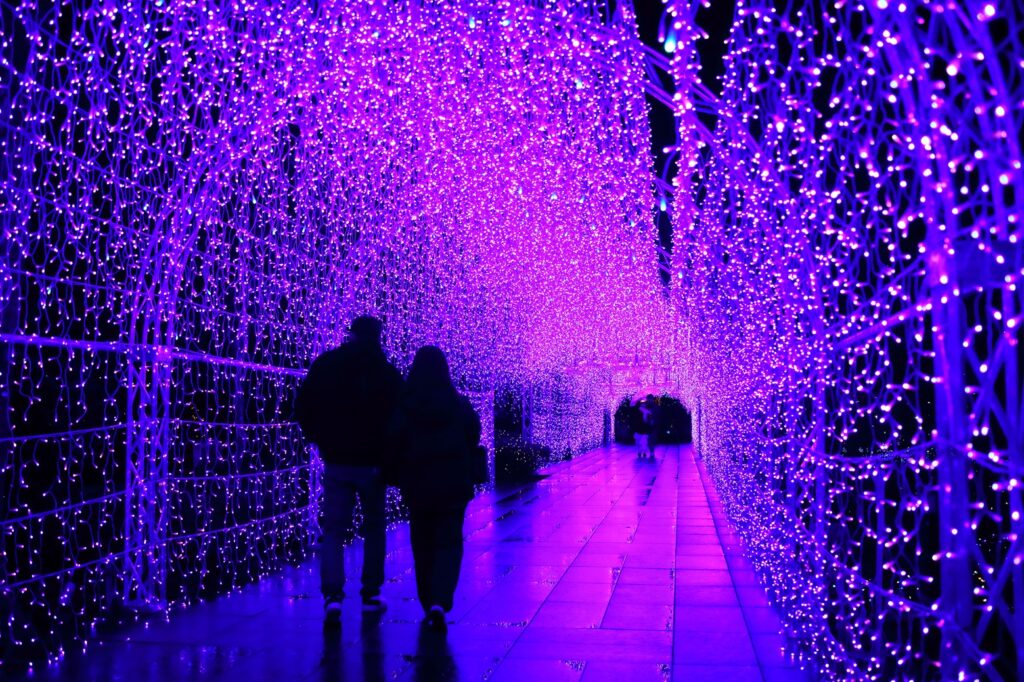
[December to January]
Experience Spring Ahead of Time/Enoshima Samuel Cocking Garden “Winter Tulips”
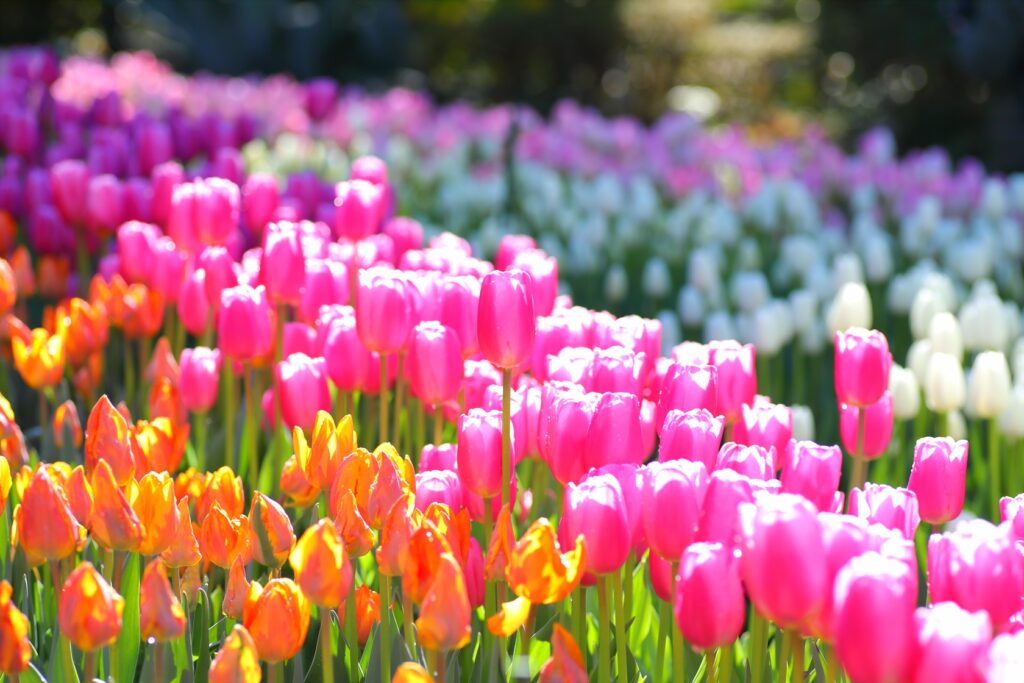
At the Enoshima Samuel Cocking Garden, approximately 10,000 tulips are planted each year. The bulbs, which are kept in refrigeration until planting, bloom into a vibrant display of red, white, yellow, and pink flowers from late December to late January. This early spring spectacle offers a colorful preview of the season. The tulips are known for their longer blooming period compared to ordinary tulips. Visitors can enjoy a touch of spring's warmth on a winter day. At 5:00 pm, the Shonan Jewel illumination begins, and the tulips are also illuminated, creating a fantastical atmosphere distinct from the daytime display.

